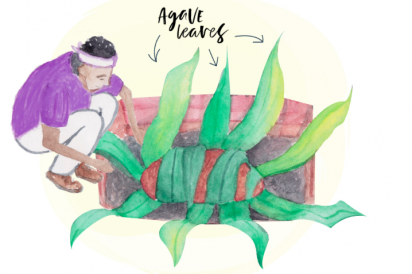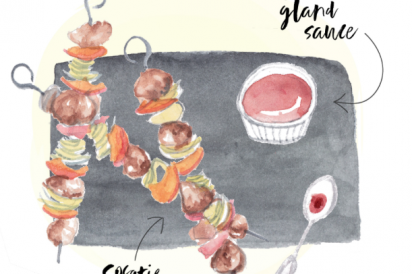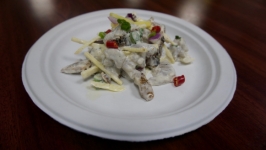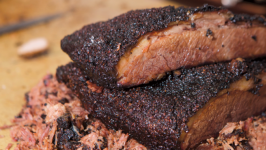Slow and Low Across Cultures
Today, barbecue is a way of preparing food and, in some communities, a way of life. Nevermind the animal—pork, chicken, beef, even alligator—or the dishes served on the side, barbecue has always been first and foremost about good company and the unique smoky flavor the process lends a choice cut of meat.
CENTRAL AMERICAN
A debt of gratitude is owed to Central Americans for our modern barbecue traditions. Whether it originated from the Arawak word “barabicu” or the Haitian word first written down by the Spanish as “barbecoa,” in Mexico today, barbacoa is still cooked up the traditional way: intrepid chefs dig an earth oven, cover the pit in agave leaves, and place sheep or goat meat inside. With a few coals, a hot fire, and an afternoon of quiet steaming, the meal is ready to be served up tender with a side of cilantro and onions.
For those without the real estate (or an agave farm hook-up) necessary for this old style of cooking, alternatives are abundant. Asado-style barbecue is another popular Mexican tradition. Every part of the animal of choice is grilled slowly over coals so organs and smaller bites are served up first as appetizers, while the heftier pieces arrive later. You may not get the sweet flavor that comes from the “maguey” leaves, but with a side of nopales (prickly pear) and corn, this dish is sure to hit the spot.
TEXAN
The many styles of barbecue compete with its compass points. In the west, along the border with New Mexico, barbecuing is simple: take a plank of mesquite wood and roast your meat on high heat, cowboy style. Across Texas, however, where the gulf winds blow and the desert descends into the bayou, barbecue is a bit more complex. Beef and pork are cooked over hickory wood; rotated until it slides right off the bone. But once you’ve added that sweet east Texas tomato sauce, all you have to do is tug lightly with your teeth.
In central Texas, things are done a bit differently: the wood of choice is oak (or even pecan) and the meat is rubbed down and dirty with spices before it’s grilled. For true southerners, barbecue’s not so much about the meat but the molasses. The thicker the sauce, the better. One thing remains constant across all four styles, however: a heaping helping of good ol’ potato salad.
SOUTH AFRICAN
In South Africa, Zimbabwe and neighboring countries, it’s not a barbecue—it’s a braai. Afrikaans for “grill,” a braai is less about the food than the friendship, so much so they’re the default party for every occasion, even Christmas.
A variety of meats, including a protein-rich sausage “boerewors” and skewered mutton dish called “sosatie,” are grilled over wood or coals. It’s all served alongside pap, a beloved porridge dish. Monkey gland sauce also makes an appearance. Despite its name, it’s actually just a vegetarian-safe cream anyone can make from standard pantry-stuffers like chutney, soy sauce, and mustard.
SOUTH KOREAN
Compared to earth ovens in the Caribbean, Korean barbecue is downright futuristic. “Bulgogi,” which translates literally to fire meat, is cooked exclusively indoors on a stovetop gas-powered grill. The boilerplate is replaced multiple times throughout the meal, ensuring a fresh surface that enhances the unique flavors of each marinated meat dish. Given its extremely thin cuts of meat, bulgogi cooks fast, but those in the know understand a good marination requires hours of preparation behind the smokescreen.
While it can certainly stand on its own, bulgogi is never served alone. It comes with a diverse selection of small side dishes collectively called “banchan.” These include kimchi, a spicy fermented cabbage; jeon, meats or vegetables covered in wheat and egg before being fried; and potato pancakes. Much of the banchan tradition is based on the belief that the peculiar acidity of fermented foods is the best way to enhance the fatty flavors of barbecued meats.
Bust out the grill and try something new-to-you with these barbecue dishes inspired by traditions the world over. Tag your photos online with @ediblequeens and #eqdailypic!












